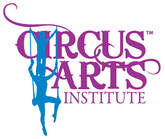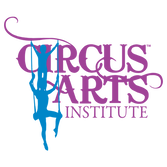CIRCUS ARTS THERAPY® TRAINING
LEVEL 1: Learning Objectives
Circus Arts Therapy®: Introduction & Foundation
By the end of the Introduction & Foundation Sessions, Learners should be able to:
Basic Aerial Training
By the end of the Basic Aerial Training, Learners should be able to:
Basic Ground Training
By the end of Basic Ground Training, Learners should be able to:
By the end of the Introduction & Foundation Sessions, Learners should be able to:
- verbally communicate specific ways in which Circus Arts Therapy® can be used in their recreational classroom setting and/or their therapy practice including goals of the Circus Arts Therapy® methodology
- identify important factors in determining an appropriate treatment plan
- be able to demonstrate basic Chi Kung exercises
- clearly identify 3 examples of Brain or Body Balancing
- identify 3 examples of your role as facilitator
- identify the different learning modalities
- identify examples of Evidence-Based Teaching Practices
- identify three differences between a typical developing student and one with sensory differences
- identify three differences between a typical developing student and one with attention differences
- identify three regulating exercises
- demonstrate reflective listening & empathy statements
- explain the difference between praise and encouragement and when is best to use each
- be able to verbally communicate how to implement the credit system for behavior modification
- identify the four practices of Cultural Humility
- demonstrate the Conflict Resolution formula
- be able to complete an intake sheet and progress report for individual and group sessions
Basic Aerial Training
By the end of the Basic Aerial Training, Learners should be able to:
- understand all Course Objectives on this page: https://www.circusartsinstitute.com/aerial-teacher-training-details.html
- understand the objectives outlined in the Adaptive Aerial Methodology
- understand the need for both physical and emotional safety for all students & clients when participating in aerial training
- understand how to ‘grade’ apparatus, skills, spotting and lesson plans for Adaptive aerial work including knowing when your student or client is ready to ‘level up’
- demonstrate the difference between proper body positioning and improper body positioning
- identify the physical, mental, and social benefits of using aerial exercises in a therapeutic session
- be able to create a basic aerial skill progression on your chosen apparatus & lesson plan for a recreational adaptive class or a specific student or therapy client
Basic Ground Training
By the end of Basic Ground Training, Learners should be able to:
- understand the objectives outlined in the Adaptive Ground Methodology
- understand the need for both physical and emotional safety for all students & clients when participating in ground circus training
- understand how to ‘grade’ apparatus, skills, spotting and lesson plans for Adaptive ground work, including knowing when your student or client is ready to ‘level up’
- demonstrate the difference between proper body positioning and improper body positioning on 3 pieces of ground equipment
- identify the physical, mental, and social benefits of using ground exercises in a therapeutic session
- be able to create a basic skill progression plan for ground apparatus & lesson plan for a recreational adaptive class or for a specific student or therapy client


